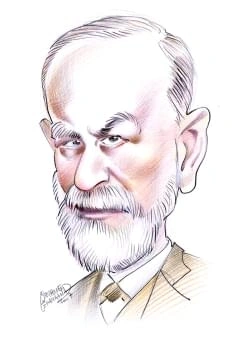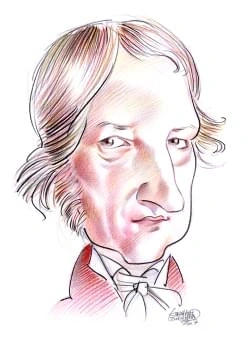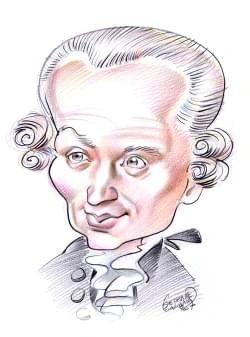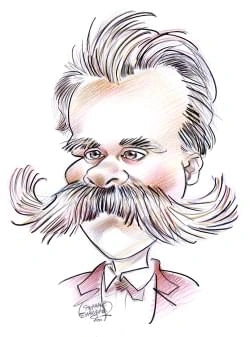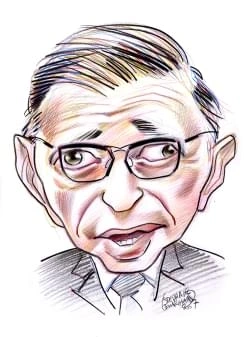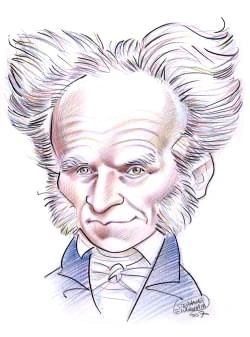787 résultats pour "percent"
-
Solomon Islands Facts and Figures.
Total 73.4 years (2008 estimate) Female 76.1 years (2008 estimate) Male 70.9 years (2008 estimate) Infant mortality rate 19 deaths per 1,000 live births (2008 estimate) Population per physician 7,692 people (2004) Population per hospital bed 526 people (2003) Literacy rateTotal Not available Female Not available Male Not available Education expenditure as a share of gross national product (GNP) 3.6 percent (2000-2001) Number of years of compulsory schooling Not available Numbe...
-
Human Nutrition.
is one of the most preventable types of cancer. Nutritionists caution that most Americans need to eat more complex carbohydrates. In the typical American diet, only 40 to 50 percent of total calories come fromcarbohydrates—a lower percentage than found in most of the world. To make matters worse, half of the carbohydrate calories consumed by the typical American comefrom processed foods filled with simple sugars. Experts recommend that these foods make up no more that 10 percent of our diet, bec...
-
Earth (planet).
Milky Way to complete one revolution around the Galaxy’s center. Earth’s axis of rotation is inclined (tilted) 23.5° relative to its plane of revolution around the Sun. This inclination of the axis creates the seasons and causes the height of the Sun in the sky at noon to increase and decrease as the seasons change. The Northern Hemisphere receives the most energy from the Sun when it is tiltedtoward the Sun. This orientation corresponds to summer in the Northern Hemisphere and winter in the S...
-
Earth (planet) - astronomy.
Milky Way to complete one revolution around the Galaxy’s center. Earth’s axis of rotation is inclined (tilted) 23.5° relative to its plane of revolution around the Sun. This inclination of the axis creates the seasons and causes the height of the Sun in the sky at noon to increase and decrease as the seasons change. The Northern Hemisphere receives the most energy from the Sun when it is tiltedtoward the Sun. This orientation corresponds to summer in the Northern Hemisphere and winter in the S...
-
Bangladesh - country.
F Environmental Issues Waterborne diseases such as cholera are a serious threat to public health in Bangladesh. Until the 1970s, many of Bangladesh’s people became sick from drinkingpolluted water drawn from surface rivers. Aid agencies such as the United Nations Children’s Fund (UNICEF) built shallow wells throughout the country to help provide asafe source of drinking water to Bangladesh’s poor. In the 1990s, however, it was discovered that many of these wells were contaminated by arsenic, a...
-
Benin - country.
French is the official language of Benin, but most people speak an African language. Each of the country’s ethnic groups has its own language. Fon is the most widelyspoken language. About 52 percent of the population professes traditional religious beliefs, chiefly Vodun, a belief in spirits. Arab merchants introduced Islam to the region, and today it isthe religion of some 20 percent of the people, most of whom live in the north. Christianity, especially Roman Catholicism, is the religion of ab...
-
Belarus - country.
In the last complete census conducted in the Soviet Union in 1989, the population of Belarus was 10,151,806; a 2008 estimate was 9,685,768, giving the country apopulation density of 47 persons per sq km (121 per sq mi). The most notable demographic trend since the 1950s has been the steady migration of the population fromthe villages to urban centers, and the correspondent aging of the population remaining in the rural areas. In 1959 urban residents accounted for 31 percent of thepopulation; in...
-
Washington, D.
structures built according to L’Enfant’s plan. During the War of 1812, British troops set fire to the White House, destroying its interior. President James Madison and hisfamily lived in the Octagon while the White House was being rebuilt. South of the Federal Triangle is the Mall, a narrow park stretching roughly 1.6 km (1 mi) from the Capitol to the Washington Monument. Although the Mall officially endsat 14th Street, landscaped greenery extends to the Potomac. The Washington Monument, whose m...
-
-
Democratic Republic of the Congo - country.
Except in the high elevations, the country’s climate is very hot and humid. The average annual temperature in the low central area is about 27°C (about 80°F).Temperatures are considerably higher in February, the hottest month. At altitudes above about 1,500 m (about 5,000 ft) the average annual temperature is about 19°C(about 66°F). Average annual rainfall is about 1,500 mm (about 60 in) in the north and about 1,300 mm (about 50 in) in the south. Frequent heavy rains occur fromApril to November...
-
Bulgaria - country.
E Climate Most of Bulgaria has a continental climate, with cold winters and hot summers. The climate in general is more severe than in other European areas of the samelatitudes, and the average annual temperature range is greater than that of neighboring countries. Severe droughts, frosts, winds, and hail storms frequently damagecrops. A Mediterranean climate, with dry summers and mild, humid winters, prevails in the valley of the southwestern Rhodope Mountains; the northern limit of theclimati...
-
Hazardous Wastes.
A Source Reduction The best way to eliminate hazardous wastes is not to generate them in the first place. For example, improvements have been made in the production of integratedcircuits: The toxic chlorinated hydrocarbons commonly used in the 1970s were replaced in the 1980s by less toxic glycol ethers and in the 1990s by low-toxicity estersand alcohols. B Recycling Recycling is the recovery or reuse of usable materials from waste. About 5 percent of hazardous waste in the United States is re...
-
New Orleans - geography.
D Metropolitan Region The New Orleans metropolitan region covers 8,800 sq km (3,400 sq mi) and includes the counties—known in Louisiana as parishes— of Orleans, Jefferson, Saint Bernard, Saint Charles, Saint John the Baptist, Saint Tammany, Saint James, and Plaquemines. At the center is the city of New Orleans, which is coextensive withOrleans Parish. It has a land area of 468 sq km (181 sq mi). Extending from this base are numerous suburban towns in the surrounding parishes. Metairie, Harahan...
-
Conservation.
cancers, Hodgkin’s disease and leukemia. Unfortunately, human activities have greatly reduced biodiversity around the world. The 20th century encompasses one of the greatest waves of extinction, orelimination of species, to occur on the planet. The greatest threat to biodiversity is loss of habitat as humans develop land for agriculture, grazing livestock, industry,and habitation. The most drastic damage has occurred in the tropical rain forests, which cover less than seven percent of the Earth’...
-
Estonia - country.
protest the expansion of open-pit phosphorite mining in northeastern Estonia. Their success in stopping the expansion prompted further demonstrations as part of thecountry’s independence movement. Since independence Estonia has taken measures to protect the environment. The government has ratified international agreementsto reduce emissions of hazardous wastes and greenhouse gases, as well as to protect biodiversity, wetlands, and endangered species. Estonians cherish thecountryside, and 31 perc...
-
Cuba - country.
Only two land mammals, the hutia, or cane rat, and the solenodon, a rare insectivore that resembles a rat, are known to be indigenous. The island has numerous batsand nearly 300 kinds of birds, including vultures, wild turkeys, quail, finches, gulls, macaws, parakeets, and hummingbirds. The bee hummingbird of Cuba is thesmallest bird in the world. Among the few reptiles are tortoises, caimans, the Cuban crocodile, and a species of boa that can attain a length of 3.7 m (12 ft). More than700 speci...
-
Lithuania - country.
pollution. III PEOPLE Ethnic Lithuanians constitute about 80 percent of the country’s population. The proportion of Lithuanians increased slightly in the first years after the dissolution of theSoviet Union—many Lithuanians returned to their homeland from that country and abroad while some Russians, Ukrainians, and Belarusians left the country. Russiansand Poles constitute the country’s largest minority groups, each accounting for roughly 7 percent of the population. Jews were the largest mino...
-
-
Kenya - country.
threatens fish and other water life in the lake by depriving them of oxygen. Kenya is well known for its game parks—including Masai Mara Game Park and Tsavo National Park in the south, and Marsabit National Reserve in the north—whichattract large numbers of tourists and much revenue. Conservation of wildlife within reserves has thus received high priority. About 13 percent (2007) of Kenya’s totalland is protected. There are 229 (2004) threatened species in Kenya. Threatened habitats include the...
-
Central America - Geography.
F Animal Life Most of the animal life of Central America is similar to that of South America, but some animals have ties with North America. The marley and opossum have links withSouth America, as do the jaguar, ocelot, jaguarundi, and margay, which are members of the cat family. In contrast, the puma, gray fox, and coyote are of NorthAmerican origin. The armadillo, anteater, and sloth have ties to the south, deer to the north. The large manatee, an aquatic plant eater, survives in the isolated...
-
Algeria - country.
areas to fishing. National parks, including the giant Tassili N’Ajjer National Park in the eastern corner of the country, comprise a large proportion of the protected area. The effects of Algeria’s human population on the fragile landscape have been severe. The greatest ecological threats are deforestation and burning of scrub vegetation,conversion of steppe habitat to arable land, and soil erosion due to overgrazing and poor farming practices. Pollution of Mediterranean coastal waters is pervas...
-
Angola (country) - country.
Portugal in 1975, it had approximately 400,000 Portuguese settlers. The vast majority of the Portuguese community has since departed for Portugal. A Population Characteristics The 2008 estimated population of Angola, including Cabinda, was 12,531,357. The population distribution, however, was uneven, with about 70 percent of thepopulation concentrated in the north and along the coast. The rate of population increase was 2.1 percent annually in 2008. The population is overwhelmingly rural; only3...
-
Burundi - country.
D Way of Life Most Burundians live in self-contained compounds of small round grass huts scattered over the country’s many hills. The rugo , the traditional Tutsi hut, is divided into sections and surrounded by an enclosure and cattle corrals. Families farm scattered plots of land on different soils at different altitudes to minimize crop failure. Thefloors of valleys are avoided due to higher temperatures and tsetse fly infestation. Social roles are largely determined by ethnicity, with the T...
-
Venezuela - country.
Venezuela has six navigable rivers. Of the thousand or more streams in the country, the majority flow into the Orinoco. The Orinoco flows east across central Venezuelaand drains approximately four-fifths of the total area of the country. With the tributaries—the Apure, Meta, and Negro rivers—it forms the outlet into the Atlantic Oceanfor the waters of much of the interior of Colombia, as well as of inland Venezuela. F Climate The climate of Venezuela is tropical on the Llanos and along the coas...
-
Republic of Singapore - country.
Singaporeans of Chinese and Indian ancestry live in small, nuclear families. Housing favors smaller families, as most units consist of small apartments in high-risebuildings. Western clothing is common, and foods reflect the Chinese, Malay, and Indian origins of the people. D Social Issues Since Singapore became an independent state in 1965, government policies have brought orderliness and efficiency to the country. Examples are supplanting slum andsquatter areas with high-rise public housing p...
-
New Hampshire - geography.
Washington. D1 Temperature The coldest parts of the state are in the White Mountains and the extreme north. Average January temperatures range from about -11° C (about 12° F) along theCanadian border to about -3° C (about 26° F) along the coast. July temperatures range from about 17° C (about 63° F) in the mountains to about 21° C (about 70° F)in the south. D2 Precipitation Precipitation is evenly distributed throughout the year over most of the state. However, the higher peaks of the White Mo...
-
-
New Hampshire - USA History.
Washington. D1 Temperature The coldest parts of the state are in the White Mountains and the extreme north. Average January temperatures range from about -11° C (about 12° F) along theCanadian border to about -3° C (about 26° F) along the coast. July temperatures range from about 17° C (about 63° F) in the mountains to about 21° C (about 70° F)in the south. D2 Precipitation Precipitation is evenly distributed throughout the year over most of the state. However, the higher peaks of the White Mo...
-
South Dakota - geography.
C1 Temperatures Average January temperatures are everywhere less than -4° C (24° F) and decrease to less than -12° C (10° F) in some northern sections. The January temperaturesin Sioux Falls range from -16° to -4° C (3° to 24° F). Nightime lows of -29° C (-20° F) occur during most winters. July averages are in the low and middle 20°s C (lowand middle 70°s F) throughout most of the state, and are somewhat lower in the Black Hills. The average temperature range in Sioux Falls in July is 17° to 30...
-
South Dakota - USA History.
C1 Temperatures Average January temperatures are everywhere less than -4° C (24° F) and decrease to less than -12° C (10° F) in some northern sections. The January temperaturesin Sioux Falls range from -16° to -4° C (3° to 24° F). Nightime lows of -29° C (-20° F) occur during most winters. July averages are in the low and middle 20°s C (lowand middle 70°s F) throughout most of the state, and are somewhat lower in the Black Hills. The average temperature range in Sioux Falls in July is 17° to 30...
-
Ukraine - country.
a major hazard, especially to Ukraine’s water supply. The Chernobyl’ complex was finally shut down completely in December 2000, with the financial assistance ofWestern nations. The funds were to pay for the completion of two other nuclear power plants that would produce enough power to make up for the loss of the powersupply from the Chernobyl’ plant. III PEOPLE OF UKRAINE The population of Ukraine was estimated in 2008 at 45,994,287, giving the country a population density of 76 persons per s...
-
Botswana - country.
at birth was 50.2 years, also a significant improvement. The urban population of Botswana has increased rapidly, from 18 percent of the total in 1981 to 51 percent in 2003. Gaborone, the capital, is the largest city and mainbusiness center. Other business centers are Francistown, Selebi-Pikwe, Molepolole, Kanye, and Serowe. Botswana received its name from the country’s principal ethnic group, the Tswana. Other ethnic groups include the Kgalagadi, Kalanga, and Basarwa. There are also asmall numbe...
-
Tajikistan - country.
by more than 100 percent due to a high birth rate and improvements in medical care. During the early 1990s, however, the growth rate began to decline due to civilwar and emigration. A Ethnic Groups and Languages Tajiks constitute the largest ethnic group in Tajikistan, making up about 65 percent of the population. The peoples who live in Gorno-Badakhshan, located in the Pamirs,are classified as Tajiks, although their languages and customs are distinct. The largest minority group in the country...
-
Moscow (city, Russia) - geography.
V RECREATION About 30 percent of Moscow’s territory is occupied by parks and public gardens, which were important elements of Soviet city planning. Gorky Park, which providesactivities such as amusement rides and boating, sits on the right bank of the Moscow River; the park’s display of a retired Soviet space shuttle dominates the riverside.The Moscow Zoo is located just west of the city center. The Botanical Gardens, administered by the Russian Academy of Sciences, offers a diverse display of...
-
Mexico City - geography.
The park houses some of Mexico's most important public buildings, including Chapultepec Castle. Construction of the castle began in 1783. Positioned on the park’shighest elevation, the castle functioned as a fortress during colonial times. It once served as the presidential residence and now houses the National Museum of History,which includes murals by 20th-century Mexican painter Juan O'Gorman. Los Pinos, the official residence and working offices of the president, is also on the grounds, buti...
-
-
Public Education in the United States.
opportunities for them to break out from whatever social or economic circumstances constrained their development. IV HIGHER EDUCATION During the 20th century participation in higher or postsecondary education in the United States increased as dramatically as it did in American high schools. At thebeginning of the century about 2 percent of Americans from the ages of 18 to 24 were enrolled in a college. There were fewer than 1,000 colleges then, with enrollmenttotaling about 157,000 students. N...
-
Pollution.
One of the greatest challenges caused by air pollution is global warming, an increase in Earth’s temperature due to the buildup of certain atmospheric gases such ascarbon dioxide. With the heavy use of fossil fuels in the 20th century, atmospheric concentrations of carbon dioxide have risen dramatically. Carbon dioxide and othergases, known as greenhouse gases, reduce the escape of heat from the planet without blocking radiation coming from the Sun. Because of this greenhouse effect,average glob...
-
Wars of Yugoslav Succession.
of Yugoslav succession was over. In January 1992 members of the European Community (EC; after 1993 the European Union, EU) recognized Slovenia’s independencealong with that of Croatia. The United States and other countries did so shortly thereafter. IV THE WAR IN CROATIA As the Yugoslav army withdrew from Slovenia in July 1991, a second and far more serious conflict erupted in Croatia. But the road to war in Croatia began more than ayear earlier. In April and May 1990 the Croatian Democratic U...
-
Wars of Yugoslav Succession .
of Yugoslav succession was over. In January 1992 members of the European Community (EC; after 1993 the European Union, EU) recognized Slovenia’s independencealong with that of Croatia. The United States and other countries did so shortly thereafter. IV THE WAR IN CROATIA As the Yugoslav army withdrew from Slovenia in July 1991, a second and far more serious conflict erupted in Croatia. But the road to war in Croatia began more than ayear earlier. In April and May 1990 the Croatian Democratic U...
-
Kazakhstan - country.
mismanagement. Between 1949 and 1991 the Soviet government conducted about 70 percent of all of its nuclear testing in Kazakhstan, mostly in the northeastern area near the city ofSemipalatinsk (now Semey). Nearly 500 nuclear explosions occurred both above and below ground near Semipalatinsk, while more than 40 nuclear detonationsoccurred at other testing grounds in western Kazakhstan and in the Qyzylqum desert. More than 1 million of Kazakhstan’s inhabitants were exposed to dangerous levelsof ra...
-
Israel (country) - country.
harbor in the northern part of the country, and Ashdod, an artificial deepwater port to the south, serve as the main seaports on the Mediterranean. The port of Elat onthe Gulf of Aqaba provides Israel’s only access to the Red Sea, making it extremely important to the country’s shipping interests. D Natural Resources Although much of Israel’s desert regions contain poor soils, the northern Negev, the coastal plains, and the interior valleys provide patches of productive soils. Anestimated 18 per...
-
Birth Control.
without a prescription and used alone or with a condom, diaphragm, or cervical cap. Spermicides used alone must be inserted deep into the vagina before each act ofintercourse and a woman should not douche for six to eight hours after intercourse. With typical use, spermicides used alone are effective in preventing pregnancyabout 74 percent of the time. They may cause an allergic reaction such as irritation of the vagina or penis. B Intrauterine Device The intrauterine device (IUD) is a small pl...
-
Croatia - country.
III PEOPLE OF CROATIA The total population of Croatia at the time of the 1991 census was 4,784,265; a 2008 estimate was 4,491,543. During and after the war ethnic Serbs fled Croatia whileethnic Croats moved in. Croatia’s population growth rate in 2008 was -0.04 percent, despite population gains due to immigration. Croatia’s natural population growthrate, which measures births and deaths, has been negative since 1998. Life expectancy at birth was 75 years in 2008. The population density in 2008...
-
-
Guatemala - country.
C Climate The climate of Guatemala varies according to elevation, from hot coastal plains to cold mountain heights. Most of the population lives between 900 and 2,400 m (3,000and 8,000 ft) above sea level, where there are warm days and cool nights with average annual temperatures of 20°C (68°F). The coastal regions are hot and humid,with average annual temperatures of 28°C (83°F). A rainy season, from May through October, is sometimes called “winter” because it brings cloudy afternoons andlower...
-
San Francisco - geography.
recognized symbol of the city, opened in 1937. It connects San Francisco to Marin County to the north, one of the wealthiest suburban areas in the nation. With the construction of the Bay and Golden Gate bridges and other links from the city to its suburbs, the San Francisco Bay area has become one large metropolitanregion. San Francisco itself is only 122 sq km (47 sq mi) of land area, but the city’s Primary Metropolitan Statistical Area (defined by the Census Bureau as SanFrancisco, San Mateo,...
-
Middle East - geography.
years.Spectrum Colour Library Apart from the Nile River, which provides much of the water supply and irrigation systems of Egypt, and the Tigris and Euphrates rivers, which supply Iraq, Syria, andTurkey, there are no major rivers or navigable waterways. The Sea of Galilee (Lake Tiberias) in northern Israel, fed from the north by the shallow, unnavigable JordanRiver, provides Israel’s main source of fresh water. With such a limited water supply, access to water for drinking, irrigation, and hydro...
-
Ecuador - country.
F Natural Resources Ecuador’s main mineral wealth is in petroleum. Other mineral resources of the country include gold, silver, copper, lead, and zinc. Forests cover 38.3 percent of thecountry. G Plants and Animals Along the northern part of the Ecuador coast, and within the inner portion of the southern coast, tropical jungles abound. In some places the jungles extend up theslopes of the Andes as wet, mossy forests. Dense forests cover both flanks of the Cordilleras, as well as the Oriente, u...
-
Iceland - country.
III PEOPLE Icelanders are one of the most homogenous peoples in the world. They are predominantly of Nordic origin, descendants of the hardy people who emigrated fromNorway to Iceland in the Middle Ages. There are also some Celtic influences from Irish and Scottish immigrants who arrived from the British Isles ( see Celts). The population of Iceland (2008 estimate) is 304,367. Numerous times in its history, Iceland has suffered major population losses due to epidemics, volcanic eruptions, and...
-
Laos - country.
by the year 2025. About one-quarter of Laos’s people live in mountainous regions. The rest live in upland valleys or on the flood plains of the Mekong and its tributaries.Just over three-quarters of the population live in rural areas, although the proportion of people living in urban areas is steadily increasing. Vientiane is the capital and largest city of Laos. Louangphrabang, the former royal capital, is an increasingly popular tourist destination. Other major cities are theregional capitals...
-
Greece - country.
minerals, such as chromium, copper, uranium, and magnesium, are relatively small. Greece’s small petroleum deposits, located under the Aegean Sea near the island ofThásos, are rapidly being depleted. There are no significant reserves of natural gas. Greece’s forests, probably abundant in ancient times, have been significantly depleted. Subsequent soil erosion has made reforestation efforts difficult. Although muchof Greece’s soil is rocky and dry, the country’s mountains are interspersed with sm...
-
Bolivia - country.
E Plants and Animals Because of the wide variations in elevation, plant and animal species of nearly every climatic zone are found in Bolivia. A coarse grass, called ichu, grows on the largelybarren high plateau in the west. Para rubber trees, more than 2,000 species of hardwood trees, and vanilla, sarsaparilla, and saffron plants are common in the tropicalforests of the east. The llama, found chiefly on the Altiplano, is an efficient beast of burden. Alpacas and vicuñas also inhabit the platea...
-
-
Banking.
loans, and some commercial loans in addition to checking accounts and time deposits. Credit unions, SLAs, and savings banks help encourage thriftiness by paying interest to consumers who put their money in savings deposits. Consequently, creditunions, SLAs, and savings banks are often referred to as thrift institutions. Of the various types of banks in the United States, commercial banks account for the greatest single source of the financial industry’s assets. In 2000 the 8,528commercial banks...
-
Vietnam - country.
E Natural Resources Vietnam’s most valuable natural resource is its land, particularly the fertile, alluvial soils in the Red and Mekong deltas. Some 29 percent of the land is currently beingcultivated. Vietnam has some valuable mineral resources, including gold, iron, tin, zinc, phosphate, chromite, apatite, and anthracite coal. Most deposits are located in the northernpart of the country. Few attempts were made to extract these minerals until the French takeover of Vietnam at the end of the 1...
}})
